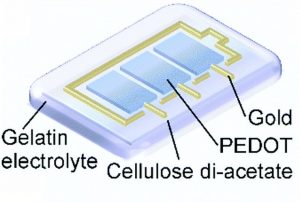Skin-Friendly, Printable Displays Gets Eco-Friendly Biodegradable ISO Certification
The skin-friendly, flexible, printable display is ideal for measuring vital stats of human body. And being biodegradable, it does not cause any bodily and environmental harm.

Karlsruhe Institute of Technology (KIT) in Karlsruhe, Germany have come up with a new printable display that is flexible and skin-friendly. This new display is now certified under the ISO 14855 certification. The certification being given by an independent office, thus making it the first skin-friendly display suitable for use in medical diagnostics and food packaging industry.
Manuel Pietsch, first author of the paper and researcher at KIT's Light Technology Institute (LTI) said, "For the first time, we have demonstrated that it is possible to produce sustainable displays that are largely based on natural materials with the help of industrially relevant production methods. After use, these displays are no electronic scrap, but can be composted. In combination with recycling and reuse, this might help minimize or completely prevent some of the environmental impacts of electronic scrap."
"As far as we know, this is the first demonstration of a biodegradable display produced by inkjet printing," adds Gerardo Hernandez-Sosa, head of the LTI Printed Electronics Group, of the team's work. "It will pave the way to sustainable innovations for other electronic components and to the production of eco-friendlier electronics."
The display created by the KIT researchers is based on an electrochromic effect, modifying the light absorption of an organic material through the application of voltage - and thus changing its colour. The resulting display has an extremely low energy consumption, simple component architecture, and can be printed using common inject technology - while its flexible and biocompatible nature means it's suitable for use in contact with food or directly on skin, once sealed with gelatin.
The team is particularly focusing on disposable uses, such as single-use medical sensors or food packaging. After use, the displays aren't dumped as e-waste but are easily compostable - and have been certified under the ISO 14855 standard for biodegradability by an external office.
The team's work has been published under open-access terms in the Journal of Materials Chemistry C.







